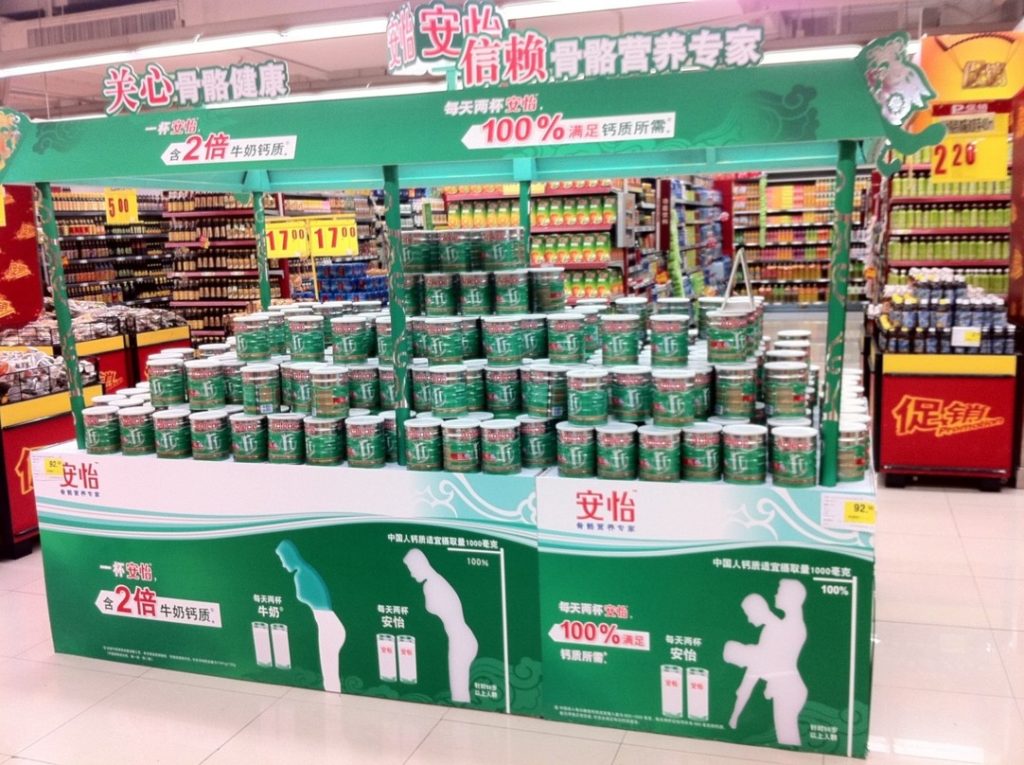“We have millions of shoppers, invest in our in-store displays and you’ll have access to this huge audience”? Which retailer am I quoting? Trick question! It could be any of them, and chances are that if you’ve worked with any of the world’s major retailers you will have heard this many times. Yet much of the shopper research we see suggests that on the contrary, in-store displays can have a limited impact, and in many cases can be a waste of time and money. How then, should shopper marketers, trade marketers and sales professionals decide if and how to use in-store displays as part of their shopper marketing strategy?
The opportunity to reach and influence so many shoppers has become a powerful rationale for expenditure on in-store displays. Indeed POPAI – the industry’s leading association, continues to heavily promote the benefits of in-store displays by publishing studies claiming that in excess of 70% of purchase decisions are made in stores.
I’m not an advocate of this point of view, and much of the research we see in the course of our insight and strategy projects with clients support the fact that in-store displays aren’t always a sound investment. And its not just us. Take a look at this article by Herb Sorenson, one of the world’s leading thinkers in shopper behavior. This presents an extremely well researched case that your in-store displays might only engage a tiny proportion of shoppers.
Herb suggests that as little as one in 140,000 shoppers are likely to engage with a specific in-store display. If this is true why are so many shopper marketers investing in in-store displays?
Shoppers don’t see every in-store display
There’s a commonly held view in retail that a small proportion of products account for the bulk of a store’s sales. Herb reckons this to be around 5%. With many shoppers buying less than five items in-store, it stands to reason few of us visit every part of the store. Herbs research tells us that shopper visit about 33% of a small supermarket just over 12% of a superstore. Depending on where your in-store display is located, its easy to see that the majority of shoppers may never see it.
Shoppers can never see every in-store display
Stores might be stuffed full of displays but having eyes located on the front of our heads means that we have a limited field of vision – a cone of 130°. So this means that even when we are surrounded by messages we could only ever see a third of these at anytime. Stores are jam-packed full of messages: at our feet, above our heads – not all of them will get into our line of view.
Shoppers don’t notice every in-store display
Shopping is not like watching TV, we aren’t static and focused on one thing. When we shop, we move our gaze every tenth of a second, according to Herb. We also know that shoppers are often working on autopilot in stores. Few shoppers are as engaged in the shopping process as shopper marketers would like them to be! The outcome of this is that even if a shopper visits the right part of the store, and our display does fall into their line of vision, they still might not notice it. A case in point: we did some research a into the way mums shopped for milk powder in Asia and one of our key findings was that only 6.9% of people noticed a huge milk powder display, and that display was huge, and right in the middle of the first aisle!
When shoppers do engage, they focus and focus to the exclusion of just about anything else in the store. When we focus, our attention is drawn into a cone of just 2° – just 1/4000 of our total field of vision.
Very few shoppers engage with an in-store display
After factoring in for the location of the display, the shopper’s field of vision, and the fact that many shoppers won’t even notice what they do see, the cost per impression on in-store displays starts to look pretty high. So how do we ensure that we get a good return on our in-store display investment?
Making in-store displays work
A few fundamental lessons can be drawn from all this:
- Target your shopper carefully – know which shoppers you actually want to focus on and understand how they shop. It is only by focusing on a specific shopper segment that we are likely to win.
- Put your in-store displays in places where they will see them –By understanding where they currently shop (and where they currently engage) we’re much better placed to get a display in front of the shopper, at least! One thing to consider: do they currently buy your category? If they do, then a display or communication at the home shelf may be far more effective than a large, secondary display.
- Don’t rely on a display alone. Consider using multiple media – hoping that one message will get through is unlikely to reap rewards so combine multiple media to get the message home. Combining old and new technologies like mobile-in-store with point-of-sale materials, colorful category themes and effective promoters reduces the chances you’ll be missed.
In-store investment costs are rising all of the time, so making sure we get the best returns out of every dollar is critical. For more about how to design the most effective and efficient shopper marketing activities, check out the best-selling “Shopper Marketing Revolution” – you can pick up a copy here, or try a free chapter here.
Image: Flickr


